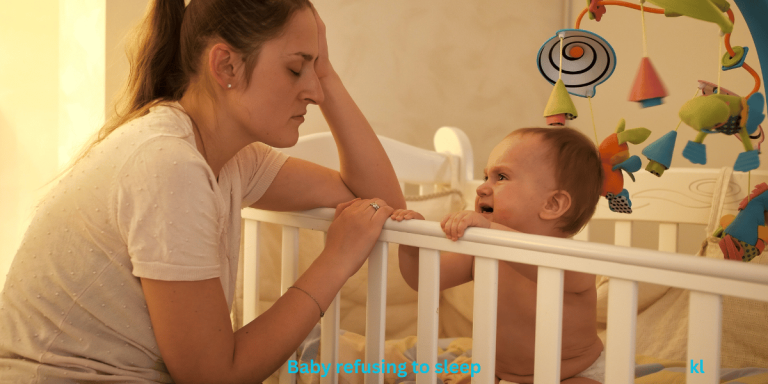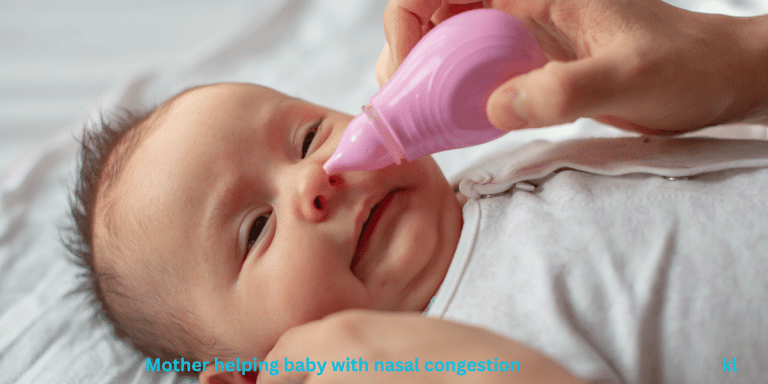Ah, the age-old question for sleep-deprived parents: when should you start sleep-training your newborn?
If you’re tired of sleepless nights and wondering when and how to begin, you’re not alone! This comprehensive guide: When to Start Newborn Sleep Training: A Real Mom’s Guide for Best Result will walk you through everything you need to know—from recognizing the right age to starting sleep training to tried-and-tested tips from real moms.
Do you know that reviews of the sleep training literature show that the majority of published studies (over 80%) report positive outcomes, regardless of what method is being tested? With this, I can assure you that success is within reach! Let’s dive in!
- What Is Newborn Sleep Training?
- The Right Time to Start Sleep Training Your Newborn
- Preparing for Sleep Training: A Step-by-Step Guide
- Gentle Sleep Training Methods for Newborns
- Mistakes to Avoid When Sleep Training Your Newborn
- Real Moms Share: The Challenges and Rewards of Sleep Training
- How Long Does Sleep Training Take? Setting Realistic Expectations
- FAQs
What Is Newborn Sleep Training?
First, newborn sleep training teaches your baby how to fall asleep independently. Notice I said “teaching”—not forcing or neglecting.
It’s essentially guiding your little one to connect their sleep cycles without relying on external help like rocking, feeding, or shushing. Think of it as laying the foundation for healthy sleep habits that’ll benefit you and your baby in the long run.
Now, it’s important to clarify the difference between sleep training and basic sleep routines because, honestly, the terms get thrown around a lot.
A sleep routine is just that—a series of calming activities you do before bedtime, like a warm bath, storytime, or a lullaby.
It’s more about creating cues for your baby to understand that it’s time to sleep. Sleep training, on the other hand, is a structured approach to helping your baby learn self-soothing techniques.
For instance, sleep coaching for babies might involve letting your little one fuss for a short period before stepping in to comfort them (commonly called the Ferber method) or gently patting their back while they’re still in the crib to encourage them to settle down.
And let’s not forget the belief that sleep training is only for “experienced” parents or that you need to hire an expensive consultant to succeed. That’s simply not true.

Plenty of us first-timers have used baby sleep training for beginners with great success. The key is understanding baby sleep patterns and setting realistic expectations.
No, your newborn won’t sleep like a log for 12 hours straight, but with patience and consistency, you’ll notice gradual improvements—fewer night wakings, longer naps, and, hopefully, a little sanity restored for you.
The Right Time to Start Sleep Training Your Newborn
Ah, the million-dollar question: when should you start sleep training your newborn? Is it during baby sleep regressions? Ahaa!
Deciding when to start baby sleep training is a big deal, and timing can make all the difference in how smooth (or bumpy) the process goes.
Let’s dive into the expert advice, the signs your baby is ready, and why starting too early or too late can affect your results.
Most experts agree that the ideal age range for sleep training is between 4 and 6 months. Why this sweet spot? Well, by 4 months, most babies are developmentally ready to start self-soothing and can go longer stretches without needing to feed overnight.
This doesn’t mean they’ll magically sleep through the night, but they’re starting to develop more consistent sleep cycles, which is crucial for sleep training success.
Starting sleep training at 4 months allows you to gently introduce new habits while they’re still adaptable to change.
Now, if you’re thinking about baby sleep training at 6 months, that’s great, too! By this age, many babies are already showing signs that they’re ready for more structured sleep routines.
They’ve likely settled into more predictable feeding and nap schedules, making it easier to establish healthy sleep habits. The key is consistency—whether you’re starting at 4 or 6 months, sticking to a plan will help your baby learn to associate bedtime with sleep.
Incorporating these tips into your baby care guide can make the process smoother and more effective!
But how do you know if your baby is ready? Look for these signs:
- They’ve reached the best age for sleep training (4-6 months).
- They’re able to stay awake longer between naps, typically around 2-3 hours.
- They’ve outgrown the need for frequent nighttime feedings.
- They struggle to fall asleep on their own or wake up frequently needing comfort.
On the flip side, starting too early can backfire. Newborns under 4 months are still figuring out their sleep-wake cycles, and they rely heavily on feeding and cuddling to soothe themselves.
Trying to sleep-train a baby who’s not developmentally ready can leave both of you frustrated (and probably more sleep-deprived).

Starting too late isn’t ideal either. Waiting until your baby is closer to 9 or 12 months can make sleep training more challenging.
By then, they may have already developed habits like needing to be rocked to sleep or waking up for comfort every few hours. Breaking those habits takes more effort as your baby becomes more set in their ways.
The bottom line? Keep an eye on your baby’s cues and start when they’re developmentally ready. Whether you begin sleep training at 4 months or wait until closer to 6 months, the goal is to create a consistent, loving routine that helps your baby learn to self-soothe and sleep independently.
Preparing for Sleep Training: A Step-by-Step Guide
The goal here is to set your baby—and yourself—up for success. It’s all about consistency, comfort, and creating the right environment. Let’s dive into a step-by-step guide to help you prepare for this journey while keeping your little one safe and supported.
Step 1: Establish a Consistent Bedtime Routine
One of the best things you can do before starting sleep training is to set up a predictable bedtime routine for newborns.
Babies thrive on consistency, so aim to follow the same series of calming activities each night. This might include:
- A warm bath to relax their muscles.
- Reading a short book or singing a lullaby.
- Gentle rocking or cuddling to help them wind down.
- Turning on a white noise machine or a calming playlist.
These rituals signal to your baby that bedtime is approaching. Over time, they’ll associate these soothing techniques for newborns with falling asleep.
The trick is to keep the routine simple and repeatable—because let’s be honest, you’ll want something easy to manage on those super-tiring nights.
Step 2: Create a Sleep-Friendly Nursery
Your baby’s sleep environment plays a huge role in how well they settle down, and it’s something that cannot be overlooked when creating a safe, newborn-ready home.
Think of it like this: you wouldn’t want to sleep in a room that’s too bright, noisy, or uncomfortable, and neither does your baby!
To create a sleep-friendly nursery, focus on these key elements:
- Darkness: Use blackout curtains to keep the room as dark as possible. Darkness helps your baby’s body produce melatonin, the sleep hormone.
- White Noise: A white noise machine can drown out household sounds and create a calming ambiance.
- Temperature: Keep the room comfortably cool, around 68–72°F (20–22°C).
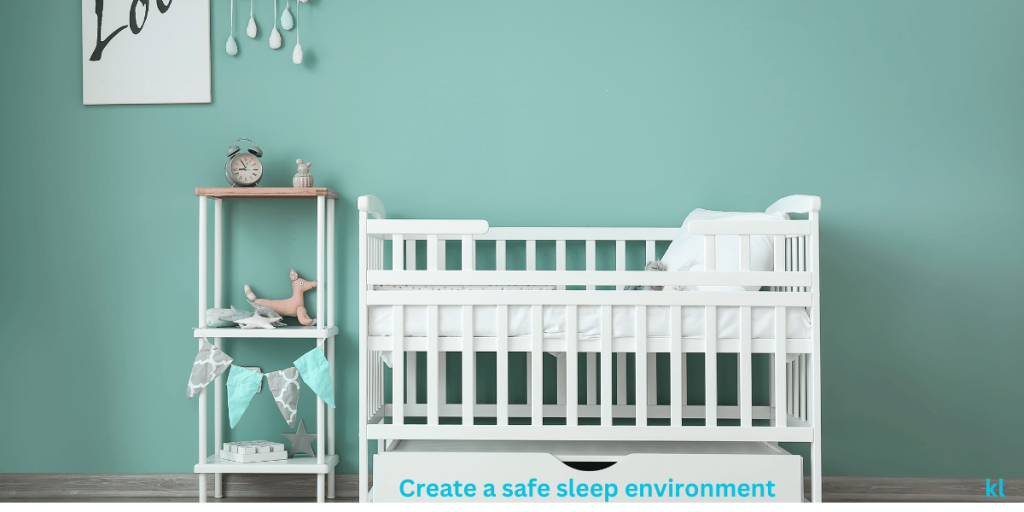
Safe Sleep Environment: Ensure the crib meets baby sleep safety guidelines. The mattress should be firm, with no pillows, blankets, or stuffed animals. This minimizes the risk of SIDS and keeps your baby safe while they sleep.
Step 3: Set Realistic Expectations
Before jumping into sleep training, take a moment to align your expectations with reality. Sleep training isn’t an overnight fix—it’s a process.
Some babies adjust quickly, while others may take a few weeks to settle into their new routine.
Here’s what to keep in mind:
- Your Baby’s Age: While some parents begin gentle techniques early on, many experts recommend starting formal sleep training between 4–6 months. Younger babies may not yet have the ability to self-soothe.
- Your Baby’s Temperament: Sensitive or high-energy babies might need extra time and patience during the sleep training process.
- Progress Over Perfection: Sleep training isn’t a straight line. Expect some setbacks, like teething or sleep regressions, along the way.
The key is to stay consistent and not give up if results don’t happen immediately. Each small improvement is a step in the right direction!
Step 4: Use Soothing Techniques to Prepare
Before introducing structured sleep training methods, spend some time helping your baby learn how to relax at bedtime. Soothing techniques can help set the tone for independent sleep while building your baby’s trust and comfort. Some effective methods include:
- Swaddling (for younger babies who haven’t started rolling yet).
- Using a pacifier to encourage self-soothing.
- Gentle back rubs or patting as they settle in the crib.
- Staying close by until they feel calm, then gradually giving them more space.
These steps can make the transition to formal sleep training much less stressful for everyone involved.
Step 5: Plan Ahead for Challenges
Preparing for potential obstacles, like sleep regressions, crying in their sleep, or teething, is always a good idea, which can temporarily disrupt progress.
Keep in mind that these bumps in the road are normal and won’t undo all the progress you’ve made. Stay patient and flexible, and remember: every baby learns at their own pace.
Gentle Sleep Training Methods for Newborns
These approaches focus on helping your baby develop healthy sleep habits without tears (for either of you!). Let’s talk about what makes gentle sleep techniques so effective, how to implement them, and why they’re a great choice for sensitive babies and parents who want a softer approach.
Age-Appropriate Sleep Training Techniques
When it comes to newborns, age matters. Gentle sleep training methods are best suited for babies who are at least 4 months old and ready to start learning how to self-soothe.
Before then, newborn sleep strategies should focus on creating a calm, supportive environment rather than strict training. For example, newborns often rely on feeding or rocking to fall asleep, which is totally normal.
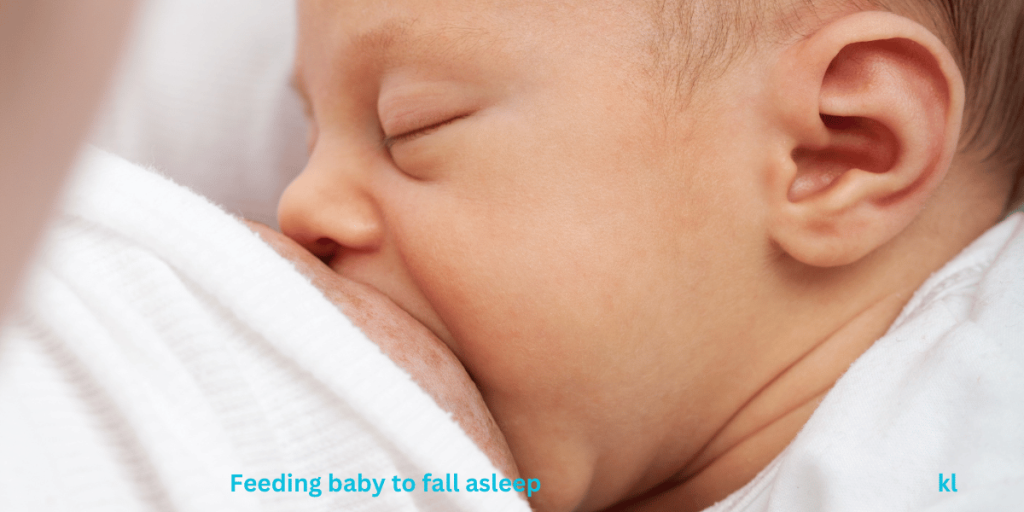
At this stage, your focus should be on identifying newborn sleep cues—like yawning, rubbing their eyes, or turning their head away—to catch them before they’re overtired.
For older infants, a gradual, gentle sleep approach works wonders. The idea is to slowly guide your baby toward independent sleep skills while still offering comfort and reassurance when needed.
Gradual Methods for Sensitive Babies
One popular gentle sleep technique is the “pick-up/put-down” method. If your baby cries after being put down, pick them up, soothe them, and then put them back down when they’re calm but still awake.
This process might require some patience, but it helps your baby feel secure while learning to fall asleep independently.
Another option is the “chair method,” where you stay close to your baby’s crib, sitting in a chair as they fall asleep. Gradually, you move the chair farther away each night until you’re out of the room. This approach is especially helpful for babies who feel separation anxiety and need extra reassurance.
Creating a Consistent Bedtime Routine
A consistent baby bedtime routine is the cornerstone of any sleep training technique—gentle or otherwise. Start with predictable, calming activities to signal that it’s time to wind down.
A warm bath, a gentle massage, a quiet story, and dimmed lights can do wonders. Over time, these routines will become sleep cues that help your baby transition from wakefulness to sleep with ease.
Balancing Comfort and Independent Sleep Skills
One of the trickiest parts of sleep training is finding the right balance between comforting your baby and encouraging independence. Babies thrive on connection, but they also need to learn how to fall asleep on their own.
Gentle sleep training methods allow you to meet both needs by responding to your baby when they’re upset while gradually reducing their dependence on you for soothing.
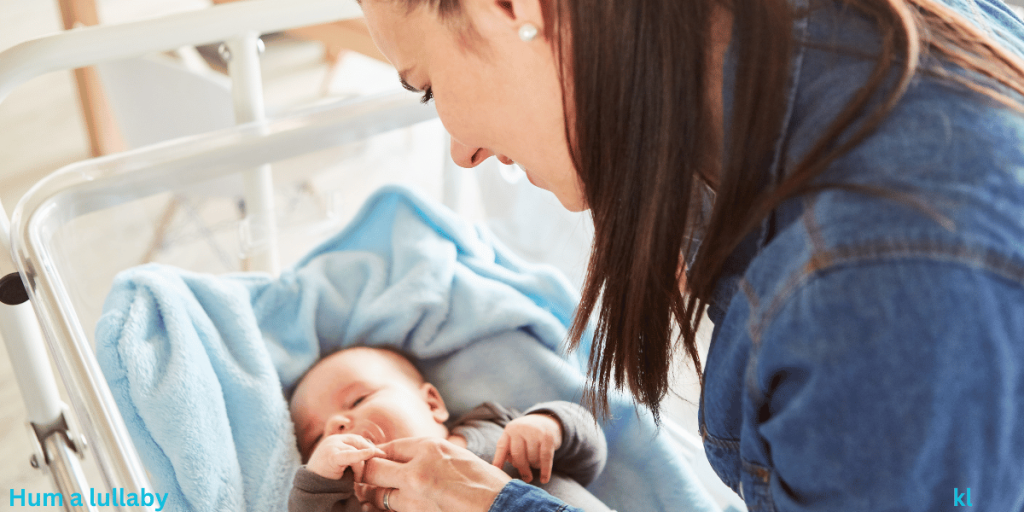
For instance, instead of picking up your baby every time they fuss, try gently patting their back or humming a lullaby while they’re still in the crib. These small steps can help them build confidence in their ability to self-soothe, which is the ultimate goal of any baby sleep coaching method.
Mistakes to Avoid When Sleep Training Your Newborn
From sleepless nights to second-guessing our every decision, there are plenty of bumps in the road when it comes to sleep training.
But learning what to avoid can make all the difference. Here are a few common pitfalls, along with tips on how to sidestep them and set your baby (and you) up for success.
1. Inconsistency with Sleep Training Techniques
One of the biggest sleep training mistakes you can make is inconsistency. Switching things up is tempting when something doesn’t seem to be working, but babies need consistency to thrive—especially when it comes to sleep.
Sticking with it is key whether it’s the bedtime routine or the sleep training method you’re using.
Let’s talk about consistent sleep schedules for babies. If you’re not following a predictable routine or aren’t consistent in your approach, your baby may become confused or resistant.
When it’s time to sleep train, try to pick a method and stick with it for at least a week before deciding if it’s not working. Babies take time to adjust, so don’t jump ship too early.
2. Responding Too Quickly to Your Baby’s Cries
Oh, the sound of your baby crying! It’s enough to make anyone want to rush in and scoop them up, right? But one of the key aspects of sleep training is teaching your baby how to self-soothe.
If you’re responding to their cries too quickly, it can interfere with that learning process.
I get it—it’s tough. I’ve been there, standing by the crib, pacing the floor, watching the clock. But resist the urge to go in after every little whimper.

Instead, give your baby a minute or two to see if they can calm themselves down first. It’s about balance—teaching them that they’re safe while also giving them space to learn to fall asleep independently.
This is especially important when dealing with managing nighttime feedings. If your baby is waking up every night to nurse or be comforted, they might not be hungry, just in need of sleep training.
3. Overcoming Guilt: The “Cry It Out” Dilemma
The fear of “letting your baby cry” can be overwhelming, but it’s important to remember that sleep training does not mean you’re neglecting your baby. In fact, sleep training helps establish healthy sleep habits that will benefit both you and your baby in the long run.
Handling teething during sleep training, for example, is another area where you might struggle with guilt. If your baby’s teething pain is waking them up more frequently, it’s okay to adjust your sleep training plan to accommodate those needs.
Just keep in mind that it’s okay to comfort your baby, but it’s also okay to teach them to sleep on their own.
4. Overcomplicating Things
Sometimes, as parents, we tend to overthink everything. “Is the room dark enough? Do I need to add a sleep sack?
Should I try a different technique?” The list goes on and on. The truth is, that baby sleep training doesn’t need to be that complicated. You don’t need to reinvent the wheel.
Start with the basics: a consistent sleep schedule and a safe sleep environment. Keep bedtime rituals simple and soothing. And remember, you can always tweak your approach as you go along, but don’t try to overdo it from the start.
5. Ignoring Your Baby’s Cues
Another common mistake? Not listening to your baby’s sleep cues. Babies are born with natural sleep patterns, and while sleep training will help establish a better routine, it’s essential to pay attention to their unique signals.

If your baby’s overtired, it’ll be even harder to get them down. Watch for signs like rubbing their eyes, yawning, or becoming fussy. If you miss the window and try to put them down too late, it may result in more crying and frustration for everyone.
6. Not Adjusting When Necessary
Sometimes, despite all the preparation, things don’t go according to plan. It could be that your baby is having a sleep regression, or they’re teething, or maybe they just need some extra comfort. That’s okay! Flexibility is key when sleep training.
If something’s not working, don’t be afraid to adapt. You’ll likely need to make adjustments as you go, whether it’s switching to a different technique or adding more soothing time before bed.
Don’t beat yourself up about it. Parenting isn’t one-size-fits-all, and sleep training is no different.
Real Moms Share: The Challenges and Rewards of Sleep Training
For many moms, it’s a rite of passage to better sleep for the whole family. But if you’ve ever found yourself standing over the crib, heart pounding as your baby cries, you know it’s not always an easy road.
Real-Life Sleep Training Stories: The Good, The Bad, and The Ugly
First off, let’s talk about what these real moms had to say. Sleep training isn’t always smooth sailing, but the reward is so worth it.
One mom, Sarah, started sleep training her baby at 5 months old. “The first night, I was a mess. I thought for sure I was doing something wrong.
But then, after the third night, something clicked, and my baby slept for 7 hours straight! It was like magic,” Sarah shared. She was thrilled, but it didn’t come without a fair share of tears and doubts.
Then, there’s Jess, who had a completely different experience. “I felt terrible about letting my baby cry. I read all the sleep training books, but I kept thinking, ‘I’m failing her. She needs me!’” Jess recalled.
She struggled with overcoming sleep training guilt but eventually found a compromise. After a few weeks, she started using a gentle sleep training approach, where she would comfort her baby for a few minutes, then gradually reduce the time spent soothing her.
While both moms saw success, they each had to deal with their own set of challenges.

Whether it was dealing with late-night feedings, frustration from inconsistent sleep, or doubts about whether their baby was “getting it,” they learned that patience and persistence were the keys to success.
Tips for Staying Patient and Motivated During the Process
Sleep training can be emotionally and physically draining, especially for new moms. Here are a few parenting tips for baby sleep that helped these moms stay motivated:
1. Trust the Process
“Sleep training takes time. If you don’t see results right away, don’t give up!” says Sarah. This is key. You won’t get instant results, and that’s okay. Trust that your baby is learning and that consistency is the real secret to success.
2. Take It One Night at a Time
For moms like Jess, breaking down sleep training into smaller goals made it more manageable. “I focused on one night at a time.
Every night my baby slept a little longer, and it made me feel like we were making progress, even if it didn’t feel like it,” she said.
3. Ask for Help
It’s okay to ask for support. Whether it’s a spouse, a family member, or a friend, having someone to talk to during those tough nights can make all the difference. Tips for new moms on baby sleep often include a little help from those who understand.
4. Celebrate Small Wins
Even on the tough nights, find small victories to celebrate. Whether it’s your baby sleeping through a nap without waking up or simply having a more peaceful bedtime, acknowledge those moments. This keeps your motivation high and your spirit strong.

How Long Does Sleep Training Take? Setting Realistic Expectations
After all, no one wants to feel like they’re stuck in an endless cycle of sleepless nights. The good news is that, while every baby is different, there’s a general timeline you can expect, as well as some tips to keep you from feeling like you’re getting nowhere.
The Average Timeline for Sleep Training Success
So, how long should you expect sleep training to take? On average, most babies will start showing signs of improvement in 2-3 weeks, but it’s important to keep in mind that this isn’t a one-size-fits-all journey.
Sleep training schedules for infants can vary depending on several factors, including your baby’s temperament, their age, and whether or not you’re following a method that’s in line with their natural sleep patterns. Some parents see improvement within the first few days, while others may take a bit longer.
For instance, if you’re starting at 4 months, you might see quicker progress than if you’re waiting until closer to 6 months.
At 4 months, babies are still in the early stages of developing their sleep patterns, so it can sometimes be easier to get them into a good routine. On the other hand, older babies may have stronger sleep associations, which might take a bit more time to break.
A quick tip: Keep track of your baby’s sleep patterns with a sleep log. It’s a great way to see progress even when it feels like things aren’t improving fast enough. This can help you stay motivated and also spot any triggers for sleep issues (like a change in diet or teething).

Sleep training isn’t about perfection – it’s about progress! Every small step counts, and remember, you’re doing an amazing job.
Trust your instincts, be patient with yourself and your baby, and celebrate the victories, no matter how small. Your consistency and love make all the difference in helping your little one develop healthy sleep habits.
FAQs
Can You Sleep Train and Still Breastfeed on Demand?
The short answer is yes! These two things aren’t mutually exclusive. Many parents successfully sleep train a newborn while continuing to breastfeed when necessary, especially during the nighttime.
Here’s how you can balance both:
- Night feeds: If your baby still needs to feed during the night (which is common in the first few months), you can continue breastfeeding as usual. Many sleep training methods, like gentle sleep training methods, allow for nighttime feeds.
The key is to try and avoid creating sleep associations where your baby requires breastfeeding to fall asleep. This means breastfeeding can be a part of your bedtime routine, but not the only way your baby will settle down to sleep.
- Daytime feeds: If you’re breastfeeding on demand during the day, continue to do so! Babies this young need a lot of nourishment, and breastfeeding will provide them with the best nutrition.
Just ensure that during the night, you’re setting boundaries so your baby doesn’t expect to nurse every time they wake up.
Remember, sleep training doesn’t mean abandoning breastfeeding—it’s about helping your baby develop independent sleep skills while still meeting their needs.
How do I Handle Sleep Training for Twins or Multiples?
If you have twins or multiples, you might be wondering how to handle sleep training for two (or more) little ones at the same time. It’s definitely a challenge, but it’s entirely possible! Here are some tips:
- Consistency is key: Just like with a single baby, consistency in your baby’s sleep routine is crucial for success. Try to synchronize sleep schedules as much as possible.
While they might have different sleep needs, try to ensure they are both going to bed at the same time or at least following similar sleep patterns.
- Separate sleep spaces: If you’re sleep training multiples, it’s a good idea to have separate cribs or sleep spaces.
This minimizes distractions, especially if one baby is a light sleeper. You might find that having some distance between them helps both babies settle down more quickly.
- Tag-team approach: With twins, it’s likely you’ll need some extra hands! If you have a partner or a trusted helper, tag-teaming nighttime duties can help both babies feel secure without too much disruption.
Handling sleep regression solutions for twins can be tricky, so give yourself some grace if things don’t go perfectly at first. Both babies will eventually learn to sleep through the night with time and consistency.
Is Sleep Training Safe for All Babies?
When it comes to sleep training, safety is a top priority for every parent. The good news is that sleep training can be safe for most babies—but it’s important to approach it in the right way. Here’s what to keep in mind:
- Age matters: For newborns, sleep training is usually not recommended until they are around 4-6 months old. Babies younger than that are still developing essential sleep-wake cycles, and many have sleep regressions or feeding needs that need to be met.
If you start sleep training too early, it can create stress for both you and your baby. Make sure you understand your baby’s sleep needs and baby’s sleep patterns before diving into training.
- Health considerations: If your baby has any medical conditions or special needs (e.g., reflux, colic), sleep training might need to be adjusted.
Always consult your pediatrician before starting sleep training if your baby has any health concerns. It’s important to prioritize your baby’s safety and comfort before moving forward with any sleep training plan.
- Gentle approach: If you’re concerned about the emotional impact of sleep training, consider starting with a gentle sleep approach like the no-cry sleep training or gradual methods.
These are designed to be gentler on your baby’s emotions, making the process less stressful for everyone involved.


